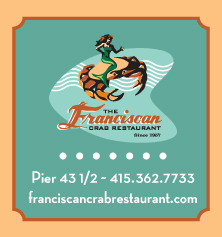Pets
It’s time to talk about urban petiquette
February 2012
It’s time to talk about urban petiquette
February 2012

Sadly, the tides have turned and shelters and adoption agencies are so full of surrendered and abandoned animals that they now promote adoptions to anyone that has the time, living situation, and means to bring one into their home, even over the holidays.
Thankfully, most advocates still warn against giving any animal as a gift and won’t place a pet without meeting the person who will actually care for it. But with or without those warnings, and with or without careful placement scrutiny, those “holiday bundles” are already showing up on our streets and in our parks with their still-proud new families. So it seems a good time to broach a subject on the minds of many of your friends and neighbors: urban petiquette.
Just as it takes a village to raise a child, it takes a community of conscientious pet owners to make dogs welcome members in our society. I’m talking about behaviors that go beyond the obvious basics of good manners (no biting, no lunging, no jumping, no barking), but whose ground rules are just as easy to remember.

Belgrade, Serbia takes a humorous approach to urban petiquette (Photo: Marko Savic / McCann Erickson Belgrade, Serbia)
Pick it up, even if it isn’t yours. Remember the “it takes a village” mantra? Dog walkers are a demographic that is brutally scrutinized these days, and a fellow walker’s callous disregard for proper sanitation reflects badly on us all. You can also use that extra bag to offer to the clueless (or careless) walker who seems to have lost visuals on their dog at just the wrong moment. Instead of screaming at them to pick up after their pet, sweetly offer them your extra bag since obviously they must have forgotten their own. This tactic works just as well if you don’t even have a dog of your own.
Be considerate of your neighbor’s property. In San Francisco, front planting areas may be the only green space a building has. I hear constantly from people who love dogs but are tired of the disrespect to their building’s landscaping. If someone has taken the time (and expense) to beautifully landscape their front walks, don’t let your male dog lift his leg on the foliage or your female climb into the plants. Just as you can housetrain a dog, you can street-train one to eliminate in an appropriate space. If you have a backyard, designate a space for your pet so that you’re the only one affected (not so trivial when it’s your own plants, is it?) And property includes just that – the corners of buildings aren’t meant to be used as urinals by dogs or drunken revelers.
Walk softly and carry a light leash. I’m a strong advocate for off-leash recreation in open areas, and there’s nothing nicer than seeing a dog walking attentively alongside his human companion on a city sidewalk. But a dog that’s running half a block ahead of you down Chestnut Street, or zigzagging up Fillmore with his nose plastered to the ground, is a danger to himself and others. Last year, at least two dogs were struck by cars on Chestnut and Union Streets because they weren’t within reach or under control. If you’re on a busy sidewalk and can’t reach down and touch your dog, keep him closer or hook him up.
Good training makes for good neighbors. Obedience training is 75 percent for the human and 25 percent for the dog, so take personal responsibility for your pet’s annoying habits. Training methods have come a long way in the last 10 years, so take a group or private lesson to brush up on positive methods to improve your dog’s – and therefore your own – public image.
It’s been proven that pets can greatly reduce stress in their companions’ lives. Consider incorporating the urban petiquette tips above into your daily routine and you might reduce your neighbors’ stress as well.
Cindy Beckman can be reached by e-mail at [email protected]


